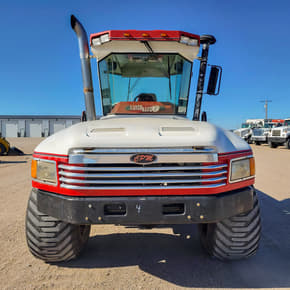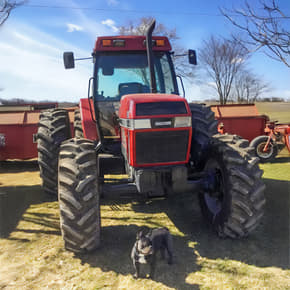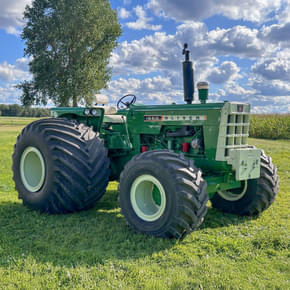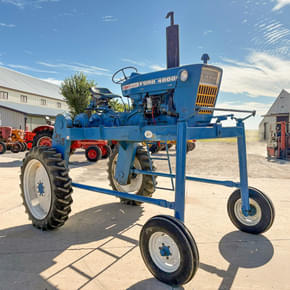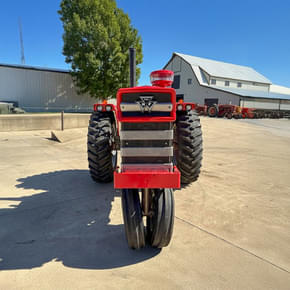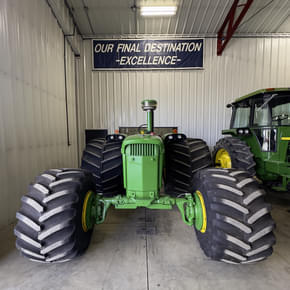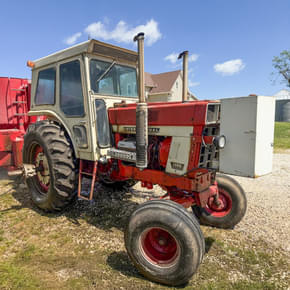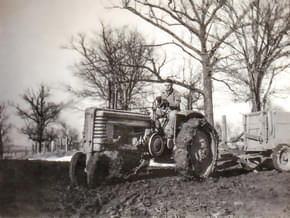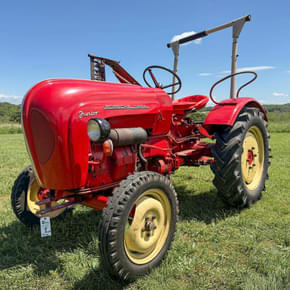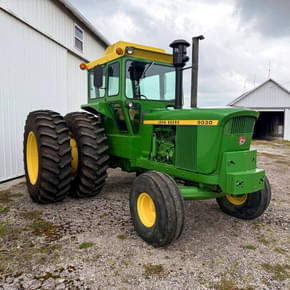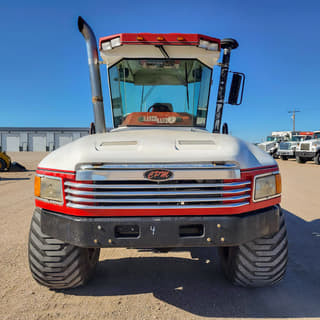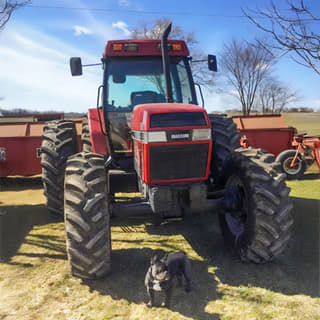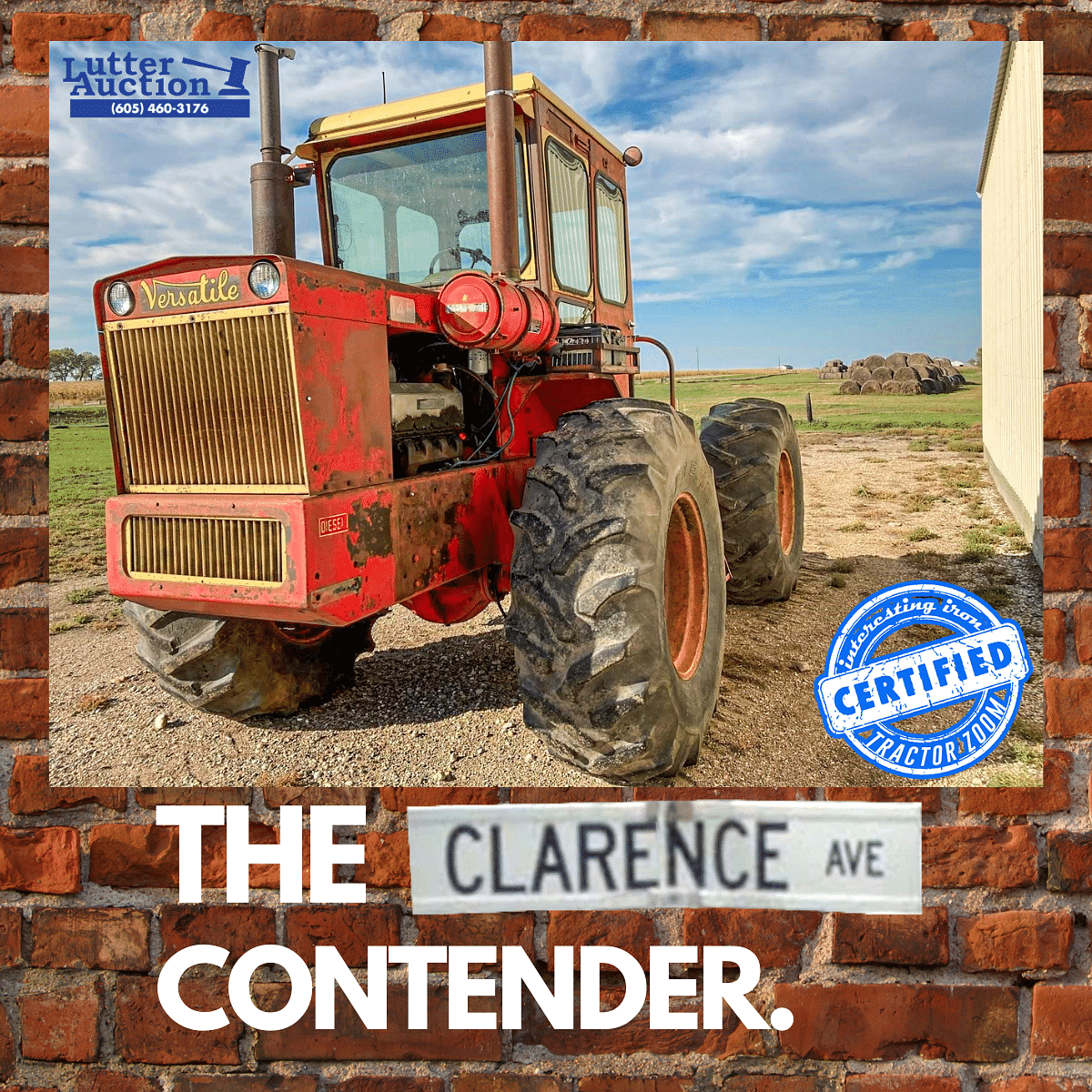
(The Versatile 145 that appears in this article has sold to a farmer in southern Minnesota, but the history of the company is still valid!)
Shop Versatile farm equipment listed on Tractor Zoom
For a long time, I’ve had a thing for big ol’ Versies. I’ve always thought they were pretty cool tractors. Never driven one before, but I’ve always wanted to.
Versatile is a neat story about a company that never lost focus on their original goal (which is probably a good lesson for all of us to be reminded of from time to time). Let’s dig in, shall we?
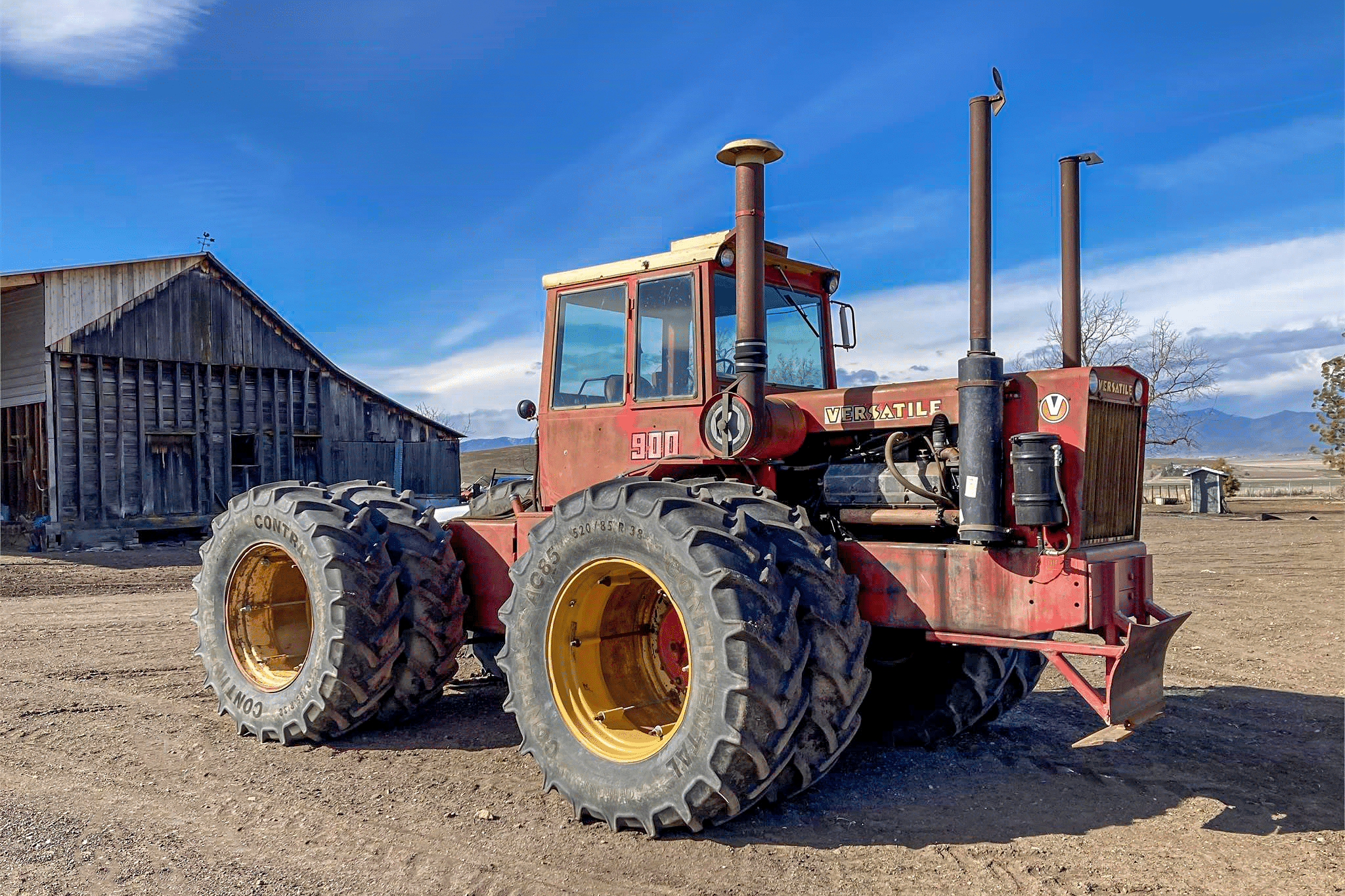
The Pakosh Family: Prairie Farmers
Emil Pakosh had come to America in 1905 from Poland, and two years later, married Claudia Wrona, another Polish immigrant. As luck would have it, not long after they married, the Canadian government started doling out 160-acre chunks of land in Saskatchewan for $10. So, the young couple decided to move north and took the deal! (For reference, that works out to buying ground for $1.11/acre today…how’d you like to have THAT deal tossed in your lap?)
It was a tough life living on the Canadian prairie for the Pakosh family, but with a team of oxen, a plow, and some fierce determination, Emil became a wheat farmer. In 1911, Peter was born in a one-room log cabin. As Peter grew up, he became infatuated with farm equipment. And, as with most young farm kids, it didn’t take long before he was out in Dad’s shed taking stuff apart just to see how it worked…much to Emil’s dismay. Some things never change, right?
Peter’s mechanical skills continued to flourish, and by 1926 at age 15, he was running a steam-powered thresher on his own. See, over time, Emil Pakosh had expanded his land to a full 640-acre section. Farming had become an all hands on deck family affair, and fortunately the Pakosh family was pretty large. Emil & Claudia had twelve kids, and Peter was the second-eldest. His ability to not only run the machinery, but also maintain and fix it, was a tremendous help. In 1926, there wasn’t much in the way of a dealer network, so it’s not like there was a parts counter seven miles away, y’know?
Side note: That whole maintain/fix thing, because there weren’t dealerships close by? That would become tremendously important to Peter about 40 years later.
“One day I’ll build you a tractor…”
Peter graduated high school in 1933. With the future of farming looking pretty grim in the midst of the Great Depression, he set his sights on his passion; mechanical engineering. There was a school in Winnipeg that had a program, and he enrolled in it in 1935. Emil paid a local cattle buyer five bucks to take his son to Winnipeg to study.
As he was leaving the farm to go to Winnipeg, he promised his father, “One day I’ll build you a tractor.” And although it took Peter about 30 years to do it, he did keep that promise.

A year or so later, Peter had fallen in love and married a young woman named Adeline. They both worked to put him through school for the next few years. Then in 1940, the young couple moved back east to Toronto, where Peter had accepted a position as a draftsman with Massey Harris.
Life was good. Sort of.
Things were going well at Massey Harris, but ideas kept Peter up at night. He even had a drafting table set up in their bedroom. He couldn’t turn off the ideas. For the next few years, he amassed a pretty good number of sketches for implements on his own. However, when he put in for a promotion/transfer to the design department at Massey, he was turned down. Management stated that he was far too young and inexperienced.
That was a tipping point in Peter’s life. It strengthened his resolve to see the idea through, regardless of what it took to get there. In 1945 he built a prototype in his basement. Local farmers were interested enough that he decided to build ten of ’em. It was a gamble, though, and money for the materials to build them wasn’t in the budget. The money did appear, though, and it came from the most unlikely of places.
It came from Adeline’s sock drawer, so to speak.
See, for the longest time, Adeline had wanted a fur coat, and she had saved a fair bit of money to get one. But when the need arose, she put the fur coat on the back burner. Quite a sacrifice!
Ultimately, the gamble paid off – Peter built all ten augers and every one of them was sold. (I don’t know if Adeline ever got her fur coat; I suspect she probably did, though.)
From augers to tractors…
Tractors like the Versatile 145 were still off in the distant future at this point, but if you want to get technical about it, that auger could be considered the first Versatile product ever built.
In 1947, Peter paired up with an Ontario farmboy (who was also his brother in law), Roy Robinson, to build a sprayer. Like Peter, Roy had good mechanical skills, and was a good machinist as well. The two made a good pair. Having successfully launched two products at this point, they decided to incorporate as the Hydraulic Engineering Co.
In 1953, the company relocated to Winnipeg in order to be closer to the larger-scale farmers of the prairie. That turned out to be a good move, as it was closer to the market for a self-propelled swather that they’d been working on. It was a pretty big hit, and provided them with the momentum they needed to start working on what Peter had always wanted to build…a tractor.
Versatile’s new home: 1260 Clarence Ave.
Meanwhile, the company continued to grow, and in 1963 incorporated as Versatile Mfg. Ltd. The following year, they built a large facility at 1260 Clarence Avenue in Winnipeg where they would continue building swathers as well as developing new products – namely, a line of tractors.
It’s still the company’s main headquarters today. Here’s what it looks like.
Roy took on the daily affairs of managing the company, while Peter’s mechanical engineer side kept him coming up with ideas. It’s been said that because the production floor was concrete, he always kept a piece of chalk in his three piece suit so that he could sketch ideas on the fly while problem-solving with the engineers. (That would’ve been a sight to see, wouldn’t it? The president of the company and a bunch of engineers all on their hands and knees designing products right there on the factory floor!)
A Blueprint for Progress
Overall, the company’s approach was pretty simple; build solid, reliable products at a reasonable price. Furthermore, build them simply enough that remote farmers could fix them easily. Peter, now in his fifties, remembered his time on the farm as a boy. Although times had changed quite a bit, he knew that in order for farmers in remote areas to buy them, the new line of tractors had to use pieces and parts that were easy to get no matter where you were. Proprietary stuff wouldn’t cut it.
Both Peter and Roy knew that there was a market for 4WD tractors, too. Pulling power to all four wheels meant that a farmer could be faster in the field. Having big floaty tires at all four corners meant that despite the weight, the tractor could still get through wet fields, meaning that the farmer could get an earlier start, too. Lastly, they had fifteen years of manufacturing experience, and they knew how to build products efficiently (the component idea was part of this), so they could pass the savings off to the farmer!
The so-called “experts” – a consulting firm as well as a marketing firm – both told the management team at Versatile that building 4WD tractors was a stupid idea. They said that there was no market for it, that nobody was going to sell a farmer a big heavy tractor like that.
Boy, it’s a good thing Peter & Roy didn’t listen, huh?
Build ’em simple, reliable, and cheap
In 1966, Versatile launched their first tractors, throwing all of that “professional advice” out the window and doing what they knew in their hearts would work. Their first tractors, the D100 and G100, were small(ish) 100-horse articulating 4WDs, and they sold every last one of them without breaking a sweat.
They were so successful, in fact, that in 1967 they added over 127,000 square feet to the Clarence Avenue factory! They had to do it in order to ramp up production on three new models – the 118, 125, and 145 (all named for the power they produced).
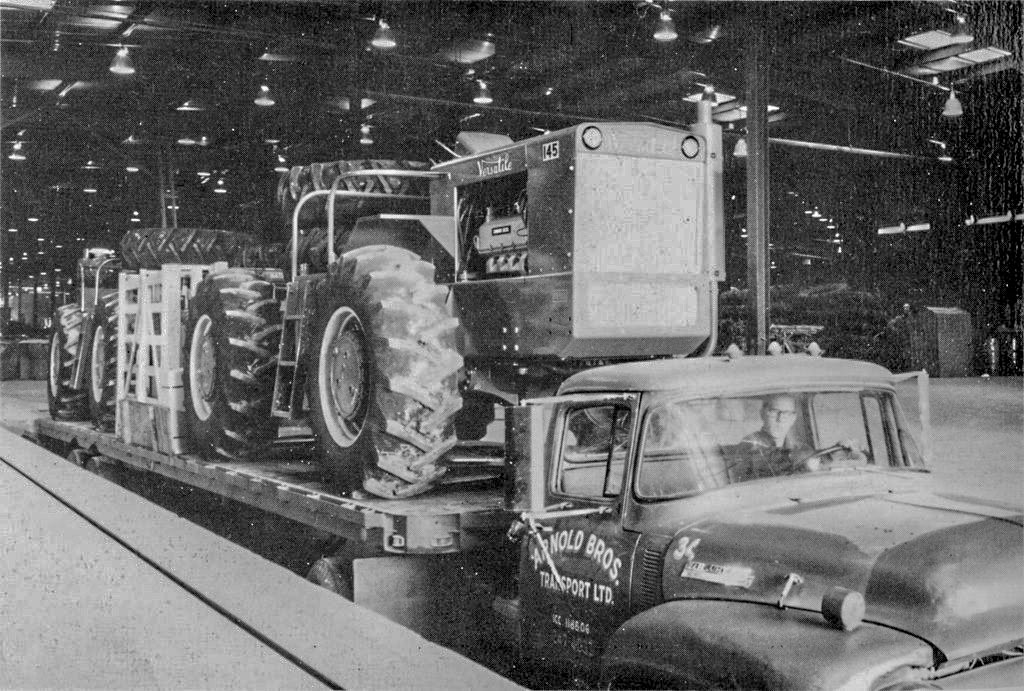
The Versatile 145 was really the last of the “small” tractors. In 1972, they broke the 200-horse barrier with the 700, and it was off to the races after that. The tried and true formula – build ’em simple, reliable, and cost-effectively – was working. By the late 70s/early 80s, Versatile had about 30% of the marketshare for 4WDs, spanning everything from a 71-horsepower bi-directional tractor up to the mammoth 470-horse 1150!
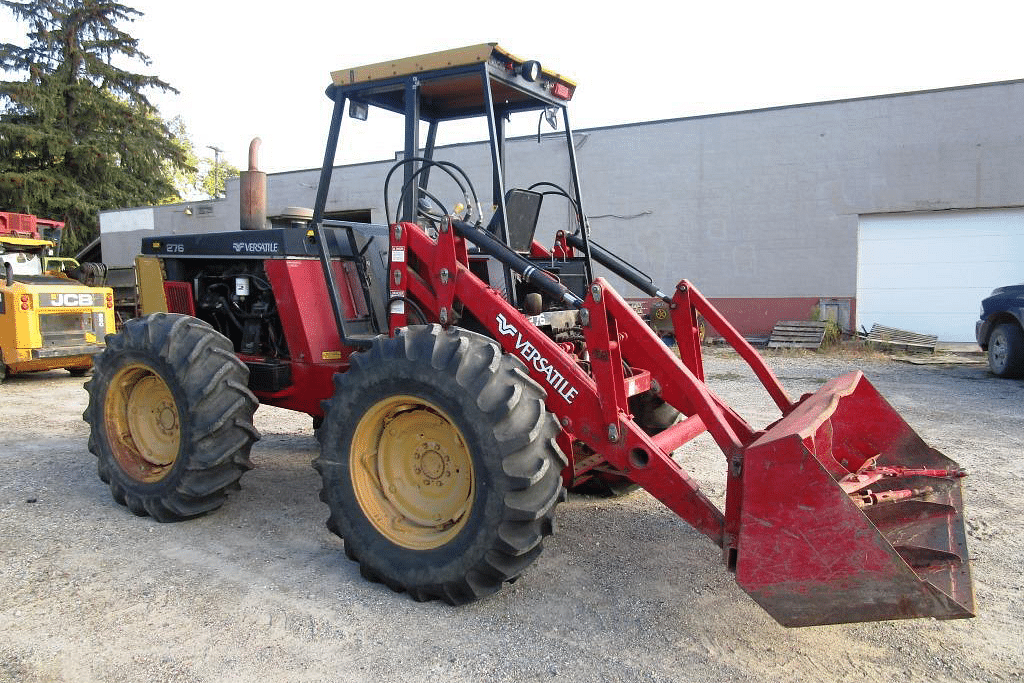
They built a pretty good dealer network in Canada as well as the northern part of the midwest, and as a result, they sold well. It’s not hard to find ’em there, that’s for sure! Lots of them have aged, for sure, but quite a few still lumber around the field today! You’ll also find lots of ’em on construction sites moving massive amounts of dirt, too.
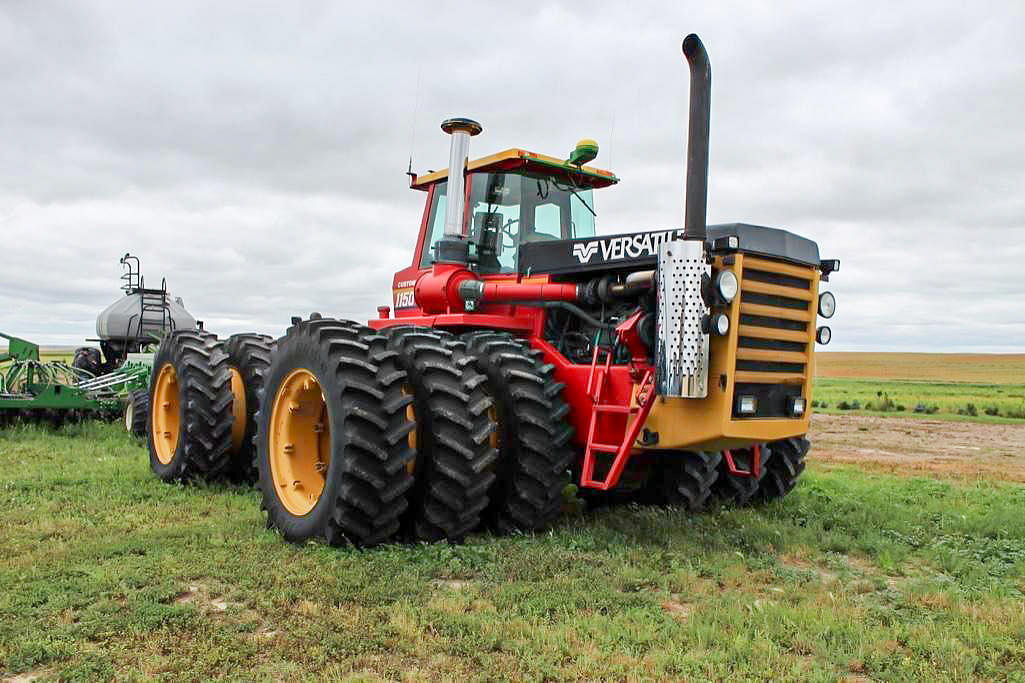
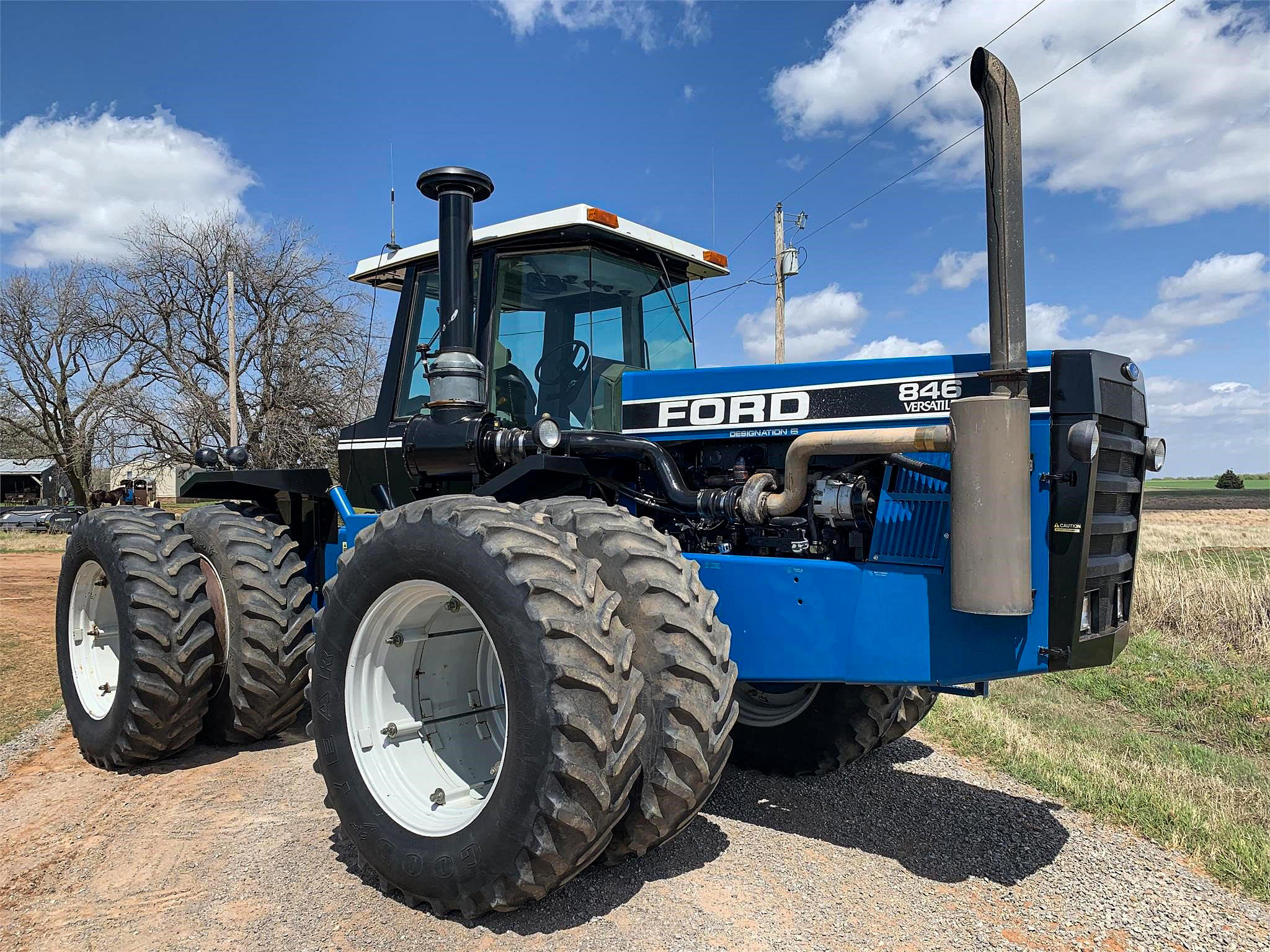
The Versatile 145 you can buy next Wednesday…
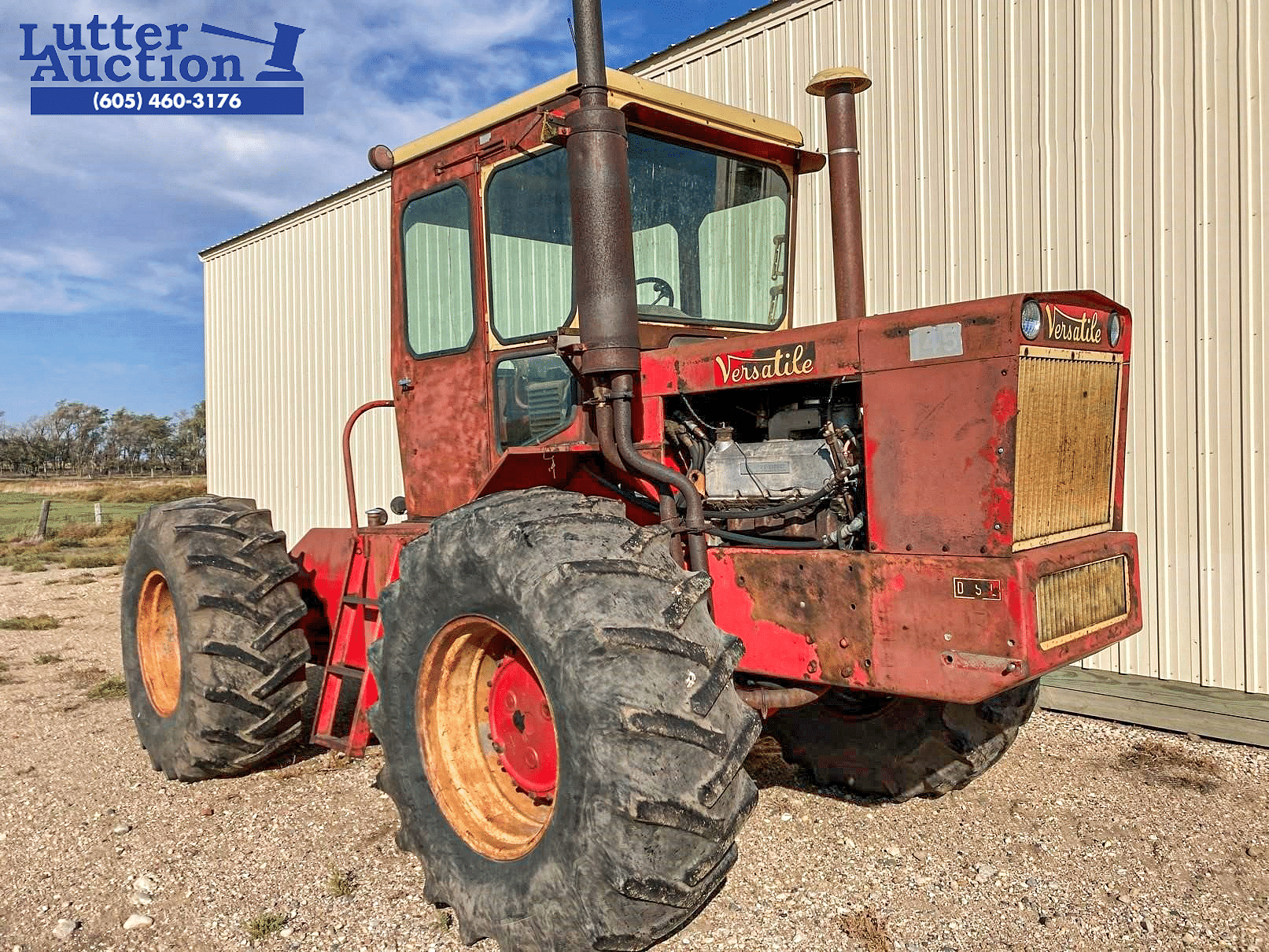
Shop Versatile equipment listed on Tractor Zoom
I didn’t have the chance to talk with the folks at Lutter Auction about this Versatile 145 and get much of the backstory on it; time kind of got away from me while I was writing. If I have time to reach out and I find out anything interesting, I’ll update the post.
Here’s what I know about this one…
It’s spent a good portion of its life in Redfield, SD. A local farmer owned it (he has since retired). As you can see, it’s got a fair bit of sunburn on the paint – my guess is that this tractor spent a few nights under the stars during its lifetime. It’s got a pair of hydraulic outlets on the back, but no PTO (which isn’t surprising – a lot of these early Versatiles didn’t have one). The 23.1×30 tires are worn and they’re cracking a little, but given their age (I believe they’re original to the tractor), that’s probably not too surprising. The tractor runs and operates very well – there’s a video of it running and driving on the auction listing. No excessive smoke, and I couldn’t see any blue smoke while it was driving. To my ears, the motor sounds pretty healthy.
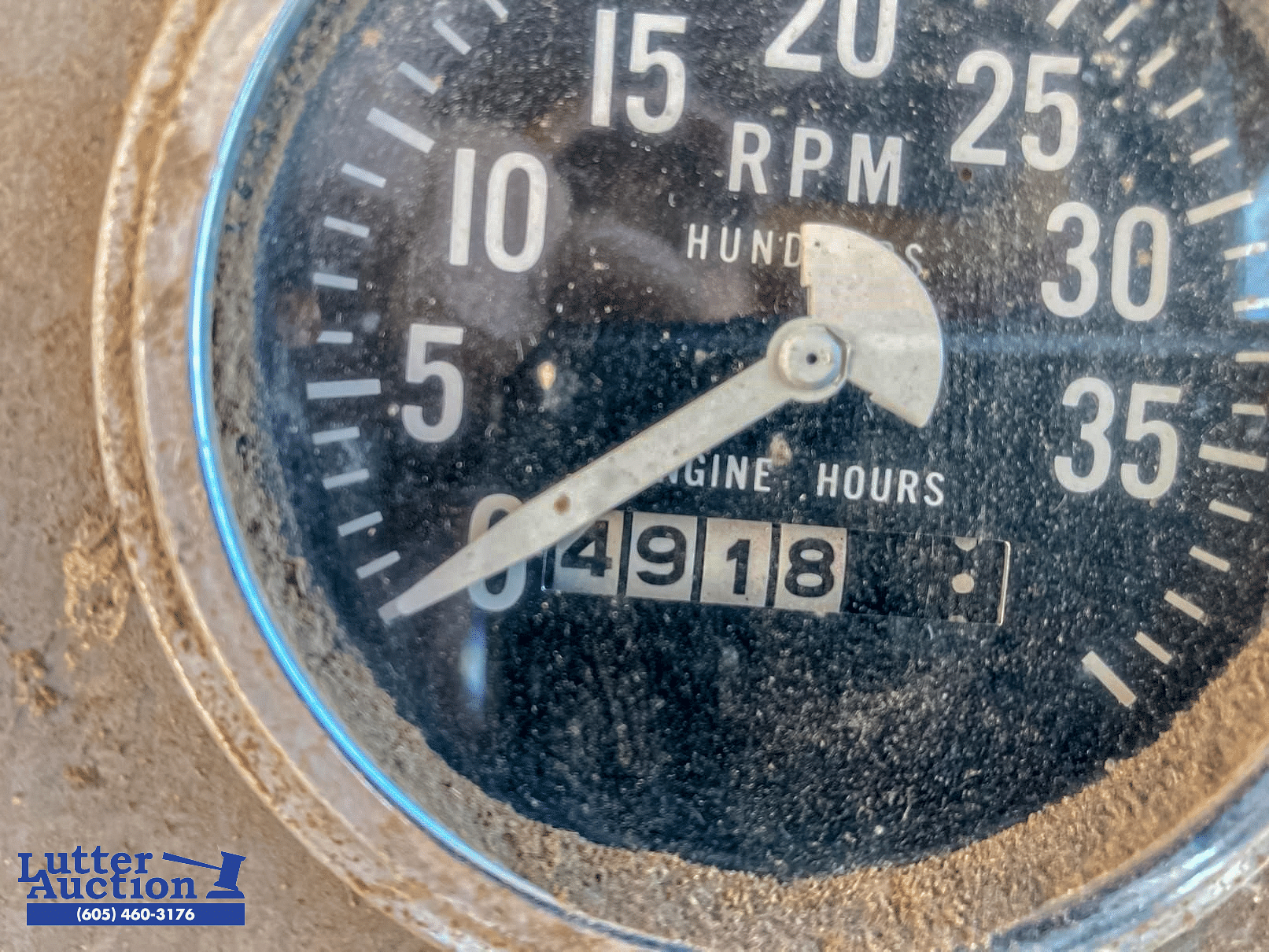
The interior needs work. The aftermarket cabs that Versatile 145s were sold with are basically just a steel box with windows. It kept the rain and snow off of the operator’s head, but that was about it. They didn’t seal very well and as such, the elements could really destroy the interior over time. That said, a lot of guys who pick these things up pull the cab off and use it/restore it as an open station, since that’s the way they left the factory.
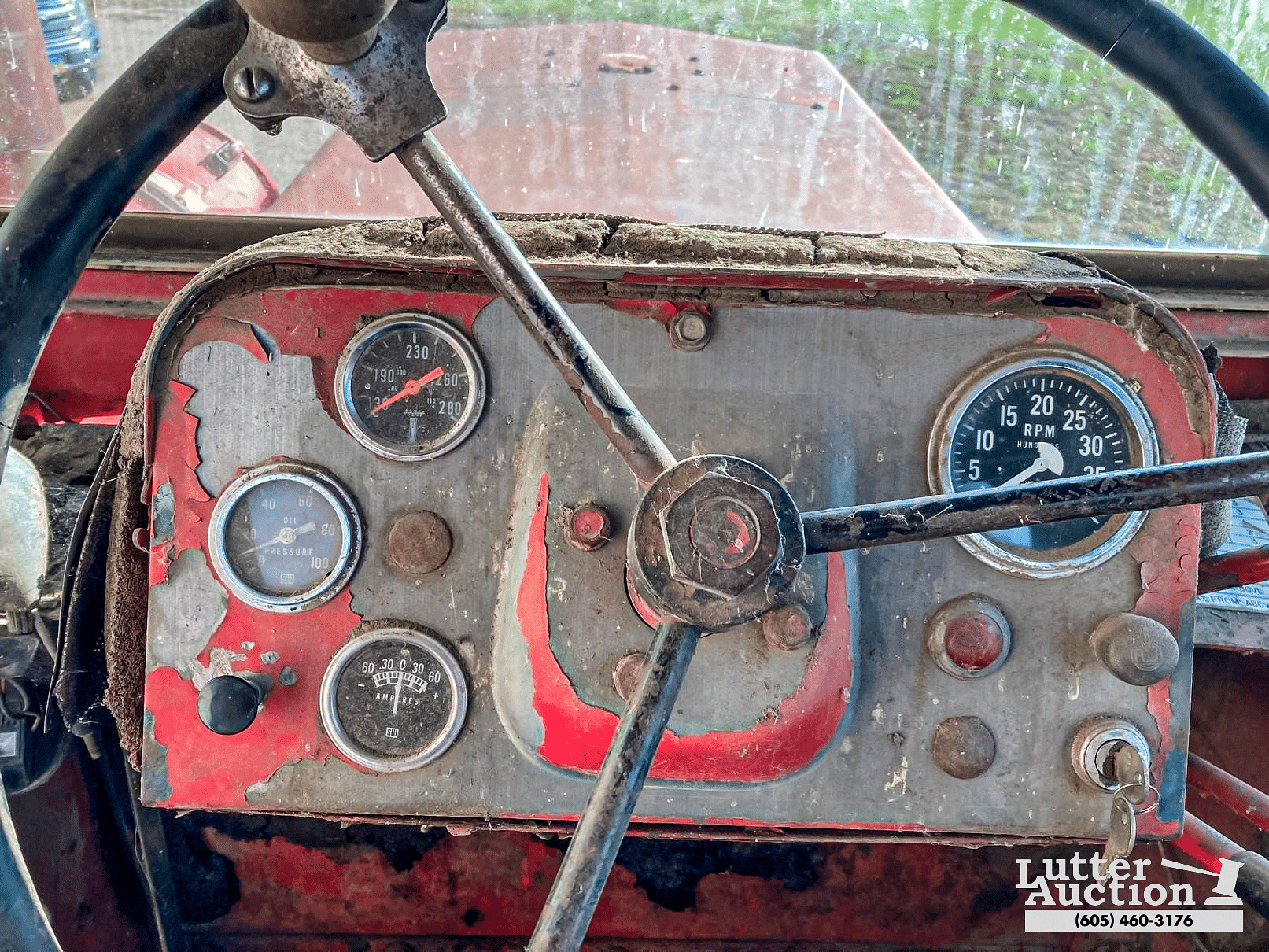
Built to be fixed…
Most of these tractors had a naturally aspirated Cummins V470 in them which made about 185 horse at the crank, and 145 horse on the drawbar. Towards the end of the run, though, Versatile started using the next generation of that motor, the Cummins V504. Both are fairly reliable engines, but parts can be a little tough to find, and rebuild kits can be spendy.
But…that’s the beauty of these old Versies, and it goes back to the simplicity of the design. They wanted farmers to be able to fix these tractors, and they made it as easy as possible. In the event of an engine failure, though, you could swap in just about any low-torque small-cube engine. I know that there are quite a few of these tractors that have been swapped with a 5.9 or an 8.3 Cummins. However, these things will take pretty much anything. Heck, you could probably stuff an old 6V-71 Detroit in there, and it probably wouldn’t be too hard to put a red or green 466 in one, too.
I believe this tractor has a 12-speed gearbox, but I don’t know who made it. Either way, from what I could tell from a little research, they were reasonably stout gearboxes.
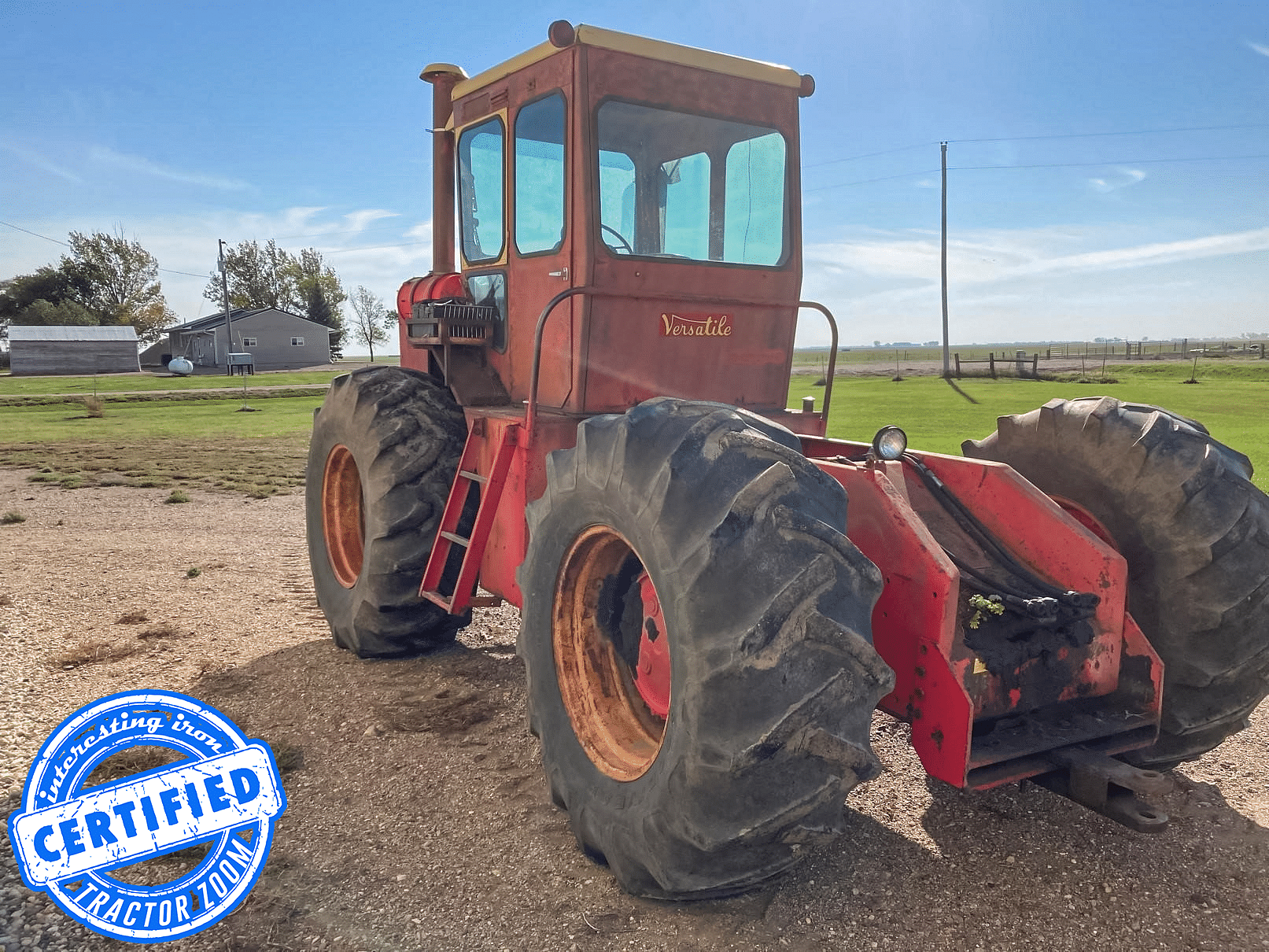
What’s a Versatile 145 worth?
There aren’t a lot of these tractors left – especially here in the States. I think Versatile only cranked out about 3000 of these, and most of them were sold in Canada. But, that said, rarity doesn’t always equate to higher value. They’re bigger than your average rowcrop. They take up space, which means they’re harder to find buyers for than a garden variety 1066. Lots of them have been sitting along the fencerow for years, so they typically need some cosmetic work, too.
The fact that it operates reasonably well (with video proof) will definitely help bring more money. The sheet metal is in good shape too; I didn’t see any major dings or dents. Granted, the paint is faded and missing in a lot of spots, but an afternoon with a powerwasher and some elbow grease, I’ll bet this one cleans up better than you think.
I did check TZ Pro to see what we had, and I was suprised to find that we had five or six records. Almost all of ’em were from North or South Dakota (and I think one was from Kansas), and I think the most I saw one sell for was a few years ago for about five thousand bucks.
Bidding opened yesterday, and it’s up to $2500 right now. At the end of the day, I think this one will probably bring somewhere between $5-7K. If I had to guess, it might be towards the higher end of the range.
It’ll be fun to see where this one shakes out, and where it ends up going. If you bring it home, reach out to me and tell me what you’re going to do with it!
Wrapping up
Versatile never once lost focus of it’s goal – to build quality products at a reasonable price, that farmers could maintain relatively easily. He remained super-focused on that goal, too. Go compare an early tractor like this one with one from the 80s when they were on top. There were a few more creature comforts, but they were never Cadillacs like some of their competitors. They were built to get the job done. No frills. That was the vision that Pakosh had for his products. It never faltered while he was at the helm, or for many years thereafter. You can option out a new Versatile like an Escalade if you want to – the company has put increased focus on operator comfort and all that, but the tractors are still built with a hard day’s work in mind. In that respect, the company has never lost their focus.
That laser focus on the goal helped them basically create their own segment of farm of equipment – the 4WD tractor. Without regard to the pioneers like Wagner and Steiger and a small handful of others that built tractors by hand before them…Versatile was the first to mass-produce articulating 4WDs. They literally legitimized the segment. They wrote the rules, and they’ve been a player ever since.
Just like Pakosh wanted.

Update:

Ryan’s Versatile 145 Estimate: $5-7,000
Versatile 145 Hammer Price: $2,700
Boy, I botched this pick, as far as the dollars and cents go. I was sure that this Versatile 145 would climb past the mid-$2000 range, but it absolutely stalled and never went anywhere!
Fun post-script to this story: This story really got around. Within a day or two of publishing, Peter Pakosh’s grandson reached out to me, thanking me for the story (and wondering how on earth I found some of the details I did), and a few days after that, I got a very nice thank you note from Versatile’s VP of Marketing. He also invited me up to the factory (it’s still on Clarence Ave.) to get the grand tour!
And the icing on the cake?
About a week after that, I got a message in our Instagram inbox. Lo and behold, it was the new owner of the tractor! They’re small farmers in SW MN and the plan is to clean it up and put it back in the field for tillage! (I sort of fished around for an invite to come and take some video of it when it was finished. If we can put it together, you’ll see the video on our socials first!)

